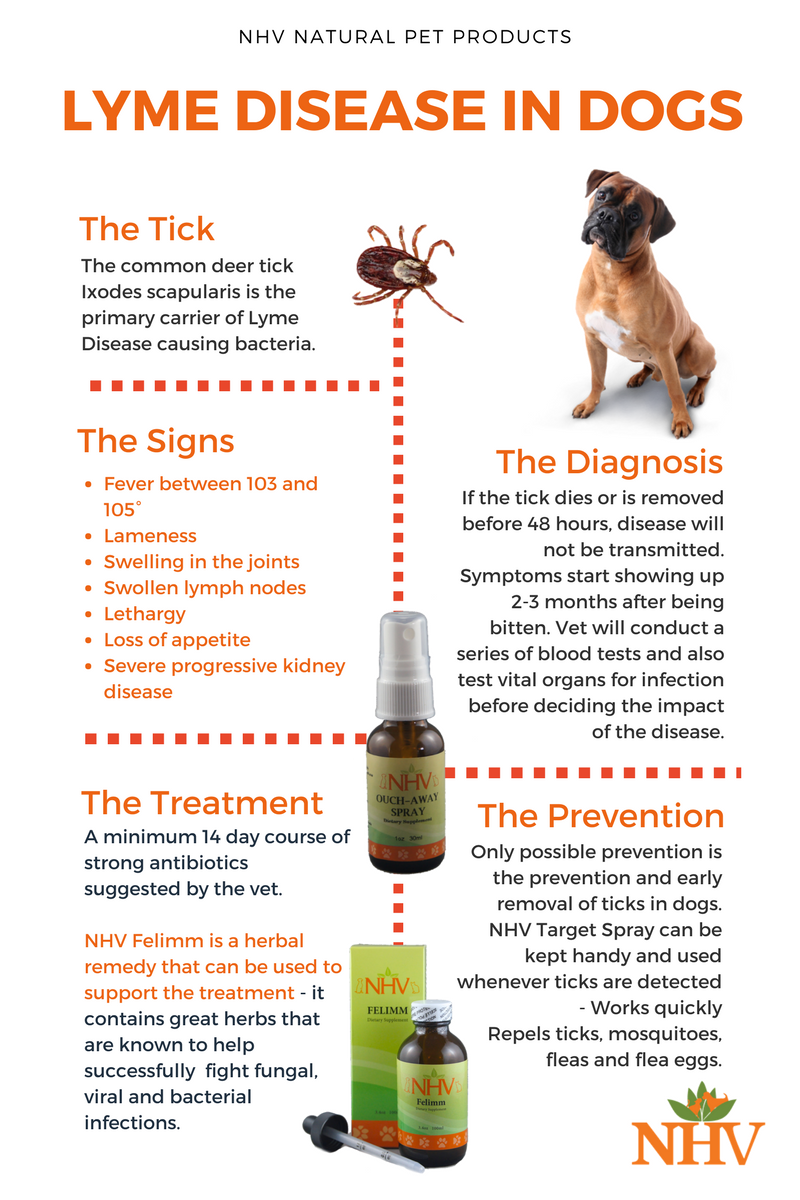Where Is Lyme Disease Found
In the United States, Lyme disease has been reported in every state, but over 95% of cases are from the Northeastern, Mid-Atlantic, and upper Midwestern states, with a small number of cases reported along the West Coast, especially Northern California. In Canada, Lyme-positive dogs are found mostly in southern Ontario and southern Manitoba, with a small number of cases in southern Quebec and the Maritime provinces.
Lyme Disease: A Pet Owner’s Guide
Lyme disease is an illness that affects both animals and humans what is known as a zoonotic disease and is the most commonly reported vector-borne illness in the United States, according to the U.S. Centers for Disease Control and Prevention . Transmitted through tick bites, the disease can be difficult to detect and can cause serious and recurring health problems. Therefore, it is best to prevent infection by taking appropriate measures to prevent tick bites and, for dogs, possibly vaccinating against the disease.
The bacterium that causes Lyme disease a worm-like, spiral-shaped bacterium called Borrelia burgdorferi is carried and transmitted primarily by the tiny black-legged tick known as the deer tick. Deer ticks are found in forests or grassy, wooded, marshy areas near rivers, lakes or oceans. People or animals may be bitten by deer ticks during outdoor activities such as hiking or camping, or even while spending time in their back yards.
Named after numerous cases were identified in Lyme, Conn., in 1975, the disease has since been reported in humans and animals across the United States and around the world. Within the U.S., it appears primarily in specific areas including the southern New England states eastern Mid-Atlantic states the upper Midwest, particularly Wisconsin and Minnesota and on the West Coast, particularly northern California. The CDC maintains a map detailing confirmed cases of Lyme disease throughout the years.
Other Canine Diseases Carried By Ticks
Ticks can also carry several other less common but serious bacterial diseases affecting dogs, including anaplasmosis and babesiosis.
Anaplasmosis can involve symptoms similar to those for Lyme disease. Babesiosis can present with a wide range of symptoms, from sudden and severe shock, high fever, and dark urine to a slowly progressing infection with more subtle clinical signs. Diagnosis of both diseases includes blood tests similar to those used to check for Lyme disease.
Sometimes, dogs and people can become sick with co-infection of multiple tick-borne diseases, where more than one type of disease-causing bacteria is transmitted through a tick bite. This situation can make diagnosis and treatment even more challenging and difficult.
You May Like: Rocky Mountain Spotted Fever Vs Lyme Disease
What Are The Symptoms Of Lyme Disease In Dogs
Dogs may not show symptoms for weeks or even months after an infected tick bites them and many dogs that are infected never show signs of illness, Dr. Muller says, noting that the symptoms of Lyme disease depend on the progression of the initial infection. Clinical signs can include:
- Fever
- Depression
- Excessive Salivating
- Kidney problems
If you live in an area where ticks are prevalent and your pup spends time outdoors, you should see your veterinarian right away if they experience any of these symptoms ! Its always better to err on the safe side.
Preventing Dog Lyme Disease

Use Ledum 1M
ONLY GIVE THESE PELLETS IF LYME SYMPTOMS ARE PRESENT. If symptoms are not present, just start at the Lyme Nosode point below.
DO NOT give more than one tiny pellet. Youll think to yourself how can this tiny pellet possibly work and youll want to give more, but dont. Follow the protocol!
Give one pellet of Ledum 1M 3 times a day for three days. If its going to work, youll notice symptoms pretty quickly maybe after 4-5 doses.
Heres a link to purchase it over on Amazon: Ledum 1M Palustre 1M 80 Pellets
Recommended Reading: Best Rife Machine For Lyme
Herbs For Lyme Disease Treatment
Herbs have been used as a medicinal treatment for thousands of years. Many people have turned to herbal remedies to help provide relief from Lyme disease when antibiotics didn’t completely help eliminate symptoms.
One research study found that a combination of doxycycline and baicalein provides additional healing benefits. According to a 2020 laboratory study, seven herbal medicines have been shown to kill B. burgdorferi in test tubes:
- Cryptolepis sanguinolenta
- Scutellaria baicalensis
Garlic has antibacterial effects and may help prevent tick bites. One study determined that people who took garlic supplements reported fewer tick bites than the placebo group. Garlic essential oil has been shown to eliminate the bacterium that causes Lyme disease.
Garlic can interact with certain medications, so speak with your healthcare provider before using it to prevent or treat Lyme disease.
Steviaa natural sweetener and sugar substitute derived from the leaves of the Stevia rebaudiana plantmay be effective in treating Lyme disease. A study published in the European Journal of Microbiology and Immunology discovered that stevia extracts are more effective in killing Lyme disease bacterium in the lab than the standard antibiotics.
Lyme Nosode Is A Prevention Must
Its important that you understand what a Nosode is. A nosode is a preparation used by many naturopathic physicians and veterinarians, as well as homeopathic doctors, in order to treat disease.
Heres how The Body Healer puts it: It is created using a highly diluted preparation of the disease itself, diluted to the point that there is no danger of contracting any illness. There is no potential to become infected as the dilution process deactivates all viable organisms.
Think of it as a form of very gentle vaccine that has no dangers or side effects and is safe for adults, children, and pets. Both naturopathic physicians and vets consider it far more successful than the Lyme vaccine, which is considered weak at best.
Recommended Reading: How Do You Get Tested For Lyme Disease
How Long After Treatment Should The Horse/dog Be Re
Antibodies decrease slowly but gradually after the pathogen is cleared from the hosts circulation. Re-testing should not be performed too early. For horses/dogs with positive values for antibodies to OspF but negative values for antibodies to OspC , retesting should be done 3 months after the treatment was started. For horses with a positive OspC antibody value retesting can be done 6-8 weeks after the treatment started. At the time of retesting, a decrease of antibody levels can be expected in successfully treated animals. Serum antibodies may not have completely disappeared at this time. However, they should have dropped by about 40% of the original positive value.
What Is The Best Way To Prevent Canine Lyme Disease
- Prevent ticks from transmitting disease with one of our veterinary-approved flea and tick medications.
- Get your dog vaccinated.
- Inspect your dog for ticks after walks through wooded trails. Check your dog under their collar, under their tail, between their toes, under their legs and elbows.
- Remove ticks immediately. The quicker you find them the less likely your dog will be infected. Invest in a pair of fine tweezers and learn the proper method of tick removal.
- At your next vet visit, ask our veterinarian to conduct a tick check during the exam. Well be able to find any you may have missed.
- Keep your grass mowed and refrain from walking into grassy patches in endemic tick areas.
Meet the Team
Read Also: What To Do If You Have Lyme Disease
Can Infection Be Spread Directly From One Dog To Another Dog Or From My Dog To My Family
Direct spread of Lyme disease from one dog to another dog has not been reported, even when infected and uninfected dogs have lived together for long periods.
Spread of Lyme disease from dogs to people has not been reported either, but people are equally at risk for Lyme disease if they are bitten by an infected tick.
Topic 1b: Geographic Distribution And Epidemiology Of Bb Infection
Prevalence estimates of LB in dogs are hindered by a lack of demonstrative clinical signs and no national surveillance system for companion animal diseases. However, screening tests for Bb antibodies are widely used, and estimated canine Bb seroprevalence data at the US state and county and Canadian province and territory levels are available based on input from commercial diagnostic laboratories through the Companion Animal Parasite Council . Lyme disease in humans has been a notifiable disease in the US for many years although not every case is reported to the Centers for Disease Control and Prevention and surveillance summaries lag behind disease reporting. Underreporting of cases in humans is more likely in highly endemic areas, whereas misclassification is more likely in nonendemic areas. The same may be true for dogs. Travel history of sick or seropositive dogs is an important historical question because cases in nonendemic areas may occur after travel to or importation from endemic disease areas.
Also Check: Anabolic Steroids And Lyme Disease
Tiny Deer Ticks Transmit Lyme Disease
Although the tick prefers certain creaturessuch as voles, white-footed mice, or deerupon which to feed during the various stages of its life cycle, it is quite willing to feed on people or dogs. Regardless of its stage of development , if the tick carries the bacteria in its body, people and dogs can become infected if bitten. Once a tick attaches, it takes 1-2 days for it to transmit the bacteria that cause Lyme disease, so prompt removal of ticks is important. Risk of transmission is highest during periods when the nymphs and adults are actively seeking hosts.
Lyme disease in dogs has been reported in every state in the United States, but certain geographical areas are much more likely to harbor bacteria-carrying ticks than others. Infection rates of ticks vary, but can be as high as 50%. Areas in the United States where it occurs most often include the northeast , upper Midwest, and Pacific coast. The disease is actually named after the town Lyme, Connecticut, where an early outbreak was first described. Lyme disease is also seen in Europe and Asia. The risk of Lyme disease being transmitted to people is increasing. In the last 20 years, the number of cases reported to the Centers for Disease Control has about doubled, to around 30,000/year. Although the rate of occurrence of the disease in a geographic area is similar in both animals and people, animals, especially dogs, are at significantly higher risk because of their greater exposure to ticks.
Can My Dog Recover From Lyme Disease

Provided the disease is detected and treated effectively early enough, with the course of antibiotics signs of Lyme disease typically resolve within the first 3 days.
However, the organism that causes Lyme disease is very good at hiding and while treatment is typically successful in eliminating clinical signs, dogs that test positive for Lyme disease will remain positive for years, if not forever. If your dog tests positive but is not sick, your veterinarian will tell you whether they recommend treating at that time.
Though most dogs infected with Lyme disease will develop arthritis, the silent killer is the Lyme organism and antibodies produced after exposure, which can damage the filter in the kidneys. The impact of this form of the disease on the kidneys can easily go unnoticed until it is too late. If your vet determines that the kidneys have been affected, this can be treated and monitored before severe renal problems arise.
Recommended Reading: Does Lyme Disease Always Have A Rash
What Are Symptoms Of Lyme Disease In Dogs
When it comes to Lyme disease, dogs are often asymptomatic . However, here are some common signs of Lyme disease in dogs:
- Fever
- Lack of appetite and depression
- General discomfort or malaise
- Lameness due to inflamed joints
- Sensitivity to touch
- Difficulty breathing
If your dog is displaying symptoms of Lyme disease, contact your vet to schedule an examination. Left untreated, signs of Lyme disease in dogs can progress to kidney failure and even be fatal in severe cases. Serious neurological impacts and cardiac effects may also take place due to untreated Lyme disease.
Lyme Disease Is Common In New Jersey
While there is no cure for Lyme disease in dogs, good tick control and vaccinating your pet for Lyme can prevent your dog from catching the disease. Lyme disease rates in New Jersey have been rising rapidly. Check out this website to learn more about heat mapping in your region. While there is no cure for Lyme disease in dogs, a vaccine can prevent your dog from catching the disease. If they already have Lyme disease, our veterinary staff can administer antibiotics to get them healthy and feeling better fast. City by the Sea Veterinary offers complete pet care services, including vaccines, pet microchipping, dentistry, surgery, and a whole lot more. Contact our office today to request an appointment.
Don’t Miss: Old Lyme Shores Homes For Sale
Signs Of Lyme Disease In Dogs
- Fever
- Swollen, painful joints
- Lameness in one or more limbs
- Swollen lymph nodes
The signs of Lyme disease vary from case to case. No signs may be seen, especially at first. When signs do appear, they may be vague and can easily be mistaken for another health problem.
In dogs, the most common signs of Lyme disease include fever, lethargy, loss of appetite, swollen lymph nodes, and painful or swollen joints that cause lameness. The lameness may be intermittent and can shift to different limbs. Some dogs will be reluctant to move because of joint pain.
Without treatment, Lyme disease will affect the kidneys, causing vomiting, increased thirst and urination, and further loss of appetite. Dogs who develop kidney failure can become very sick and may not respond to treatment.
Nervous system issues are more common in humans but may also occur in dogs, potentially leading to facial paralysis and seizures. Secondary heart disease is rare but can cause respiratory distress and collapse.
The signs of Lyme disease in dogs are very different than those in humans. People may develop serious and sometimes long-lasting symptoms from a Lyme disease infection. However, only about 10 percent of dogs infected with B. burgdorferi will develop symptoms that require treatment.
Final Thoughts About Lyme Disease In Dogs
Homeopathy demonstrates worldwide effectiveness in treating a variety of infectious diseases. In fact, it has over 200 years of amazing success in epidemics, human and animal.
As a dog owner, dont give in to the fear and hype surrounding Lyme disease. Be mindful of the reality of its rarity and of the power of homeopathy to cure if it does occur.
Visit theavh.org to find a homeopathic vet to help with your dogs journey to health.
Also Check: Lab Work For Lyme Disease
What Is The Prognosis Of Lyme Disease In Dogs
Like other dog health issues, there are a few factors that determine your pets prognosis. The prognosis depends on the time of detection of the disease, Dr. Muller says. In the case of early treatment without manifest symptoms, the prognosis is good. However, if clinical symptoms are already present that have caused damage to the kidneys, heart, and nervous system, then the prognosis is poor.
Building Your Dogs Immune System
Finally, I can attest that hands-on therapies that support a dogs immune system help prevent recurrences. In addition to her early treatment with antibiotics, nutritional supplements, and herbal support therapies, I credit Samanthas monthly acupuncture treatments and chiropractic adjustments for her athletic, Lyme-free middle age.
CJ Puotinen, a frequent contributor to WDJ, is the author of, The Encyclopedia of Natural Pet Care, and Natural Remedies for Dogs and Cats. She lives in New York.
Also Check: What Type Of Doctors Treat Lyme Disease
Dog Lyme Disease Costs
Many people are well aware that among the several unpleasant aspects of ticks is the ability to transfer Lyme disease in dogs and humans. An issue that all pet owners have to worry about is Lyme disease in dogs, particularly during the summer. Did you know that your pet can get Lyme disease, too?
When the weather is nice and warm, your dog is more likely to spend more time outside and the risk of being bitten by ticks and contracting Lyme disease increases. These nasty little parasites often look for warm bodies to attach to and feed on.
A severe infection with the bacterium Borrelia burgdorferi is the cause of dog Lyme disease.
The bacteria are usually transmitted to dogs and other animals through bites of infected black-legged ticks, like deer ticks. The nymph as well as adult stages of the black-legged tick, Ixodes scapularis transmits Lyme in dogs. Once these bacteria are in the bloodstream, they can easily travel to different body parts and cause problems in specific organs and locations, like joints.
And that is not all as more serious complications can include damage to the kidneys, and in some cases, nervous system or heart disease. It is worth mentioning that Lyme disease can also affect humans, but it cant be transferred directly to a human from a dog.
Giving Your Dog Antibiotics

Read Also: Symptoms Of Lyme Disease In Adults